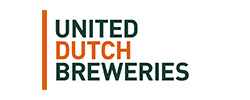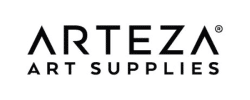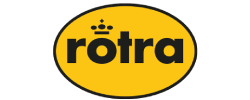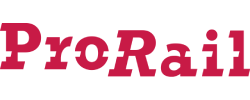9 Tips to structurally reduce your workload

By Robin van der Meulen | 20/05/2019
Have you checked the workload within your organization and teams, and is it too heavy? Have you heard complaints on the work floor about the large amount of work? Or do you experience excessive workload yourself? Read here what you can do about it. 2DAYSMOOD lists 9 tips.
Work stress is occupational disease number one. The problem is actually progressing in three areas: employees are dropping out more often, they are dropping out at a younger age and lastly, the absence is more long-term. This according to figures from the Social Affairs Inspectorate (SZW). One major cause is the increasing workload. Therefore, reducing workload should prevent stress, burnout and loss amongst employees.
How can you reduce a heavy workload as an employer?
As an employer you can do various things to reduce the workload on your employees and change their experience of high work pressure. You can think of the following actions:
1. Provide clear job descriptions: with clear (written) descriptions of tasks and responsibilities employees know what is expected and how to plan their week (Arboportaal.nl).
2. Offer a sufficient level of autonomy: autonomy helps to reduce workload. Ensure that employees can determine themselves, where, how and when they do their work (as much as possible).
3. Encourage or facilitate education: it is important that knowledge and experience levels match with the duties and responsibilities of employees. Monitor this and offer extra training when necessary!
4. Create moments for recovery: ensure that there is a calmer period after a time of high pressure and stress (after big projects, strict deadlines or seasonal peaks). You could give your employees some extra time off in this quieter period. (Via 2DAYSMOOD you can continuously monitor whether the stress level actually drops after busy periods).
5. Stimulate personal leadership: the employee also has a responsibility to prevent or reduce workload. For example, by structuring and prioritizing tasks, and defining boundaries. An employer can offer courses in time management, set up a mentoring program or help employees develop their assertiveness (or personal leadership) with a coach.
How can you take on your own workload?
In the future, if people ask you how you are doing, consider whether you are “on a roll” (we all experience a bit of stress at work) or if you are really “too busy.” In the latter case, it is important to take action and to reduce your workload.
1. Dare to ask for help: your colleagues and managers are surely willing to help you. If a co-worker would ask you for help, how would you respond? Ask for tips on how to deal with the long list of activities and set priorities together.
2. Dare to say no: there are certain situations in which your to do list has absolutely no room for more tasks. It is your job to set limits. Colleagues and managers will actually appreciate it, if you deliver your work well and on time. Although, sometimes you can “swap tasks”. If you handle something for a colleague, he or she can take care of something for you (provided that it matches with your skills of course).
3. Recharge yourself: this may sound contradictory, but regularly taking a break, relaxing and not thinking of work, is important to be and remain productive. You are able to better cope with the workload. The more energy you have, the more work you get done in a short time. You know that it is a legal right to go on vacation every now and then, right?
4. Limit overtime: are you constantly working after hours, then there is simply a structural problem that the employer must solve (Arboportaal.nl). Yet, if you keep making yourself available in the evenings and weekends, this will become the norm at work. You will give your colleagues the feeling that they have to do this as well, to be a “good employee”. It creates a vicious circle in which “being busy” equals status. Is that a corporate culture or a headlock?
Reducing workload is a collaboration between employees and their employer
To structurally reduce the workload, good cooperation between employee and employer is essential. Marco de Zeeuw, advisor at Arbokiezer, comments on this to research agency Motivaction: “We see that many providers are committing to continuous monitoring of the health and wellbeing of staff. Through questionnaires, apps and access to preventive interventions, the awareness amongst employees is increased. This is fully in line with today’s vision: the employee is responsible for his or her own life, development and health, the employer facilitates this wherever he can. ”
The innovative realtime measuring method of 2DAYSMOOD also takes on this vision. Organizations make use of our anonymous 15 second survey to measure personal leadership for example, or monitor stress levels. Through this continuous insight you can discover where the workload is too high. With additional short feedback surveys (and face to face conversations on the work floor), you can immediately take action in the right areas. You are taking a step towards a healthy positive working climate!
Blogs & Whitepapers
We believe knowledge should be shared!
Prefer to talk to an expert? Then request a free consultation about your specific issue.











Happy employees make happy customers
These (HR) managers use 2DAYSMOOD and make real impact!
How? Our measuring method is the renewed employee survey, because it’s faster, easier and science based. A continuous source of data with which you can improve your (team) culture step-by-step and increase employee happiness. In short, that is profitable for your organization!

Jan-Herman Hanskamp

Emma Sluman

Rita Blankenberg

Robin Gerritsen
Leading Organizations Work with 2DAYSMOOD













Get in touch for free advice, a demo or quick scan!
Always the employee survey that suits you.
Do you want to increase happiness in your teams? Collect feedback on a specific subject? Monitor stress in real-time? Or do you need a baseline survey to get insight in the drivers of your culture?
We are happy to help with your specific challenge, using:
- Our expertise, experience and energy!
- A demo of our tool (if you like)
- The opportunity to try it for free
- Or enjoy reading our brochure



